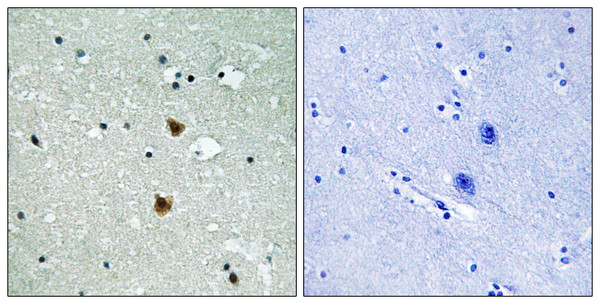| Post Translational Modifications | Phosphorylated upon exposure to protein kinase C activators and heat shock. Phosphorylation by MAPKAPK2 and MAPKAPK3 in response to stress dissociates HSPB1 from large small heat-shock protein (sHsps) oligomers and impairs its chaperone activity and ability to protect against oxidative stress effectively. Phosphorylation by MAPKAPK5 in response to PKA stimulation induces F-actin rearrangement. |
| Function | Small heat shock protein which functions as a molecular chaperone probably maintaining denatured proteins in a folding-competent state. Plays a role in stress resistance and actin organization. Through its molecular chaperone activity may regulate numerous biological processes including the phosphorylation and the axonal transport of neurofilament proteins. |
| Protein Name | Heat Shock Protein Beta-1Hspb128 Kda Heat Shock ProteinEstrogen-Regulated 24 Kda ProteinHeat Shock 27 Kda ProteinHsp 27Heat Shock Protein Family B Member 1Stress-Responsive Protein 27Srp27 |
| Database Links | Reactome: R-HSA-4420097Reactome: R-HSA-450408Reactome: R-HSA-5687128Reactome: R-HSA-9009391 |
| Cellular Localisation | CytoplasmNucleusCytoskeletonSpindleCytoplasmic In Interphase CellsColocalizes With Mitotic Spindles In Mitotic CellsTranslocates To The Nucleus During Heat Shock And Resides In Sub-Nuclear Structures Known As Sc35 Speckles Or Nuclear Splicing Speckles |
| Alternative Antibody Names | Anti-Heat Shock Protein Beta-1 antibodyAnti-Hspb1 antibodyAnti-28 Kda Heat Shock Protein antibodyAnti-Estrogen-Regulated 24 Kda Protein antibodyAnti-Heat Shock 27 Kda Protein antibodyAnti-Hsp 27 antibodyAnti-Heat Shock Protein Family B Member 1 antibodyAnti-Stress-Responsive Protein 27 antibodyAnti-Srp27 antibodyAnti-HSPB1 antibodyAnti-HSP27 antibodyAnti-HSP28 antibody |
Information sourced from Uniprot.org





















